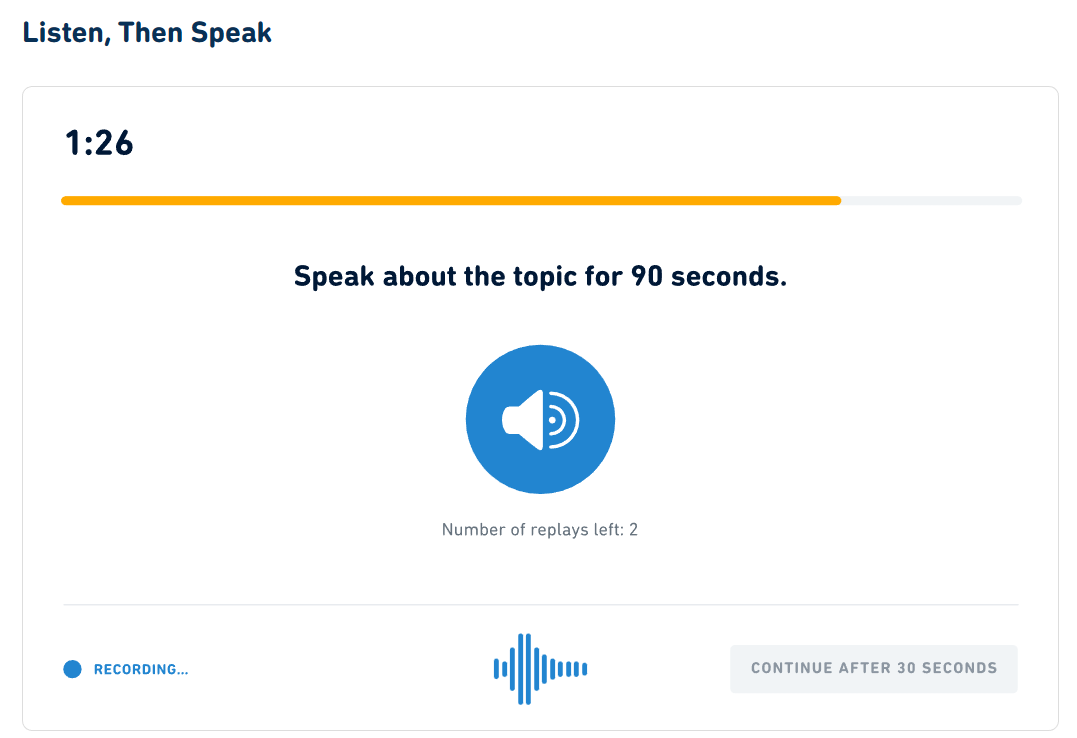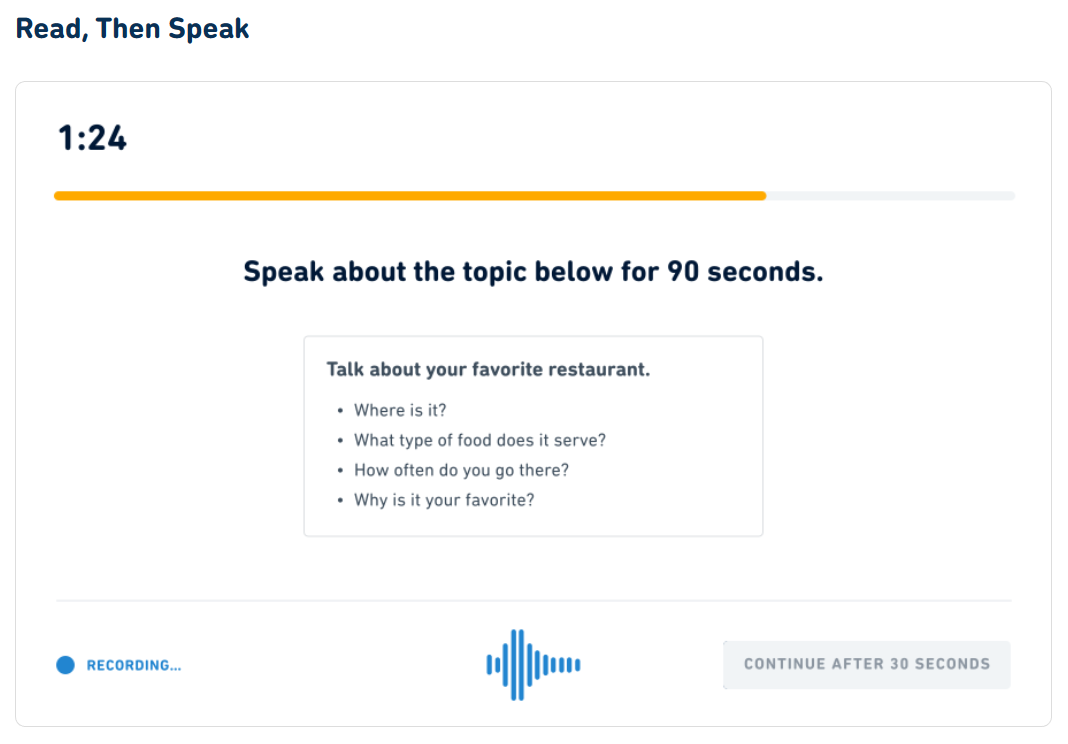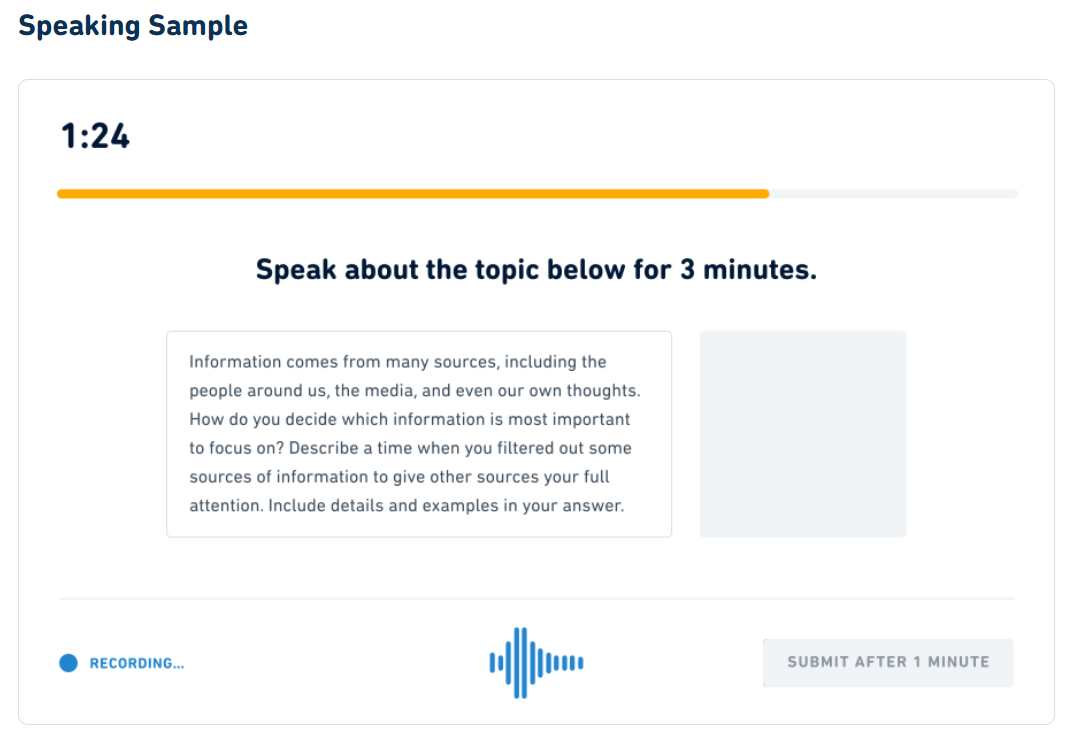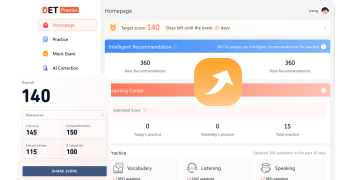Duolingo English Test Speaking Practice: A Step-by-Step Improvement Guide
Welcome to your comprehensive guide to mastering the speaking section of the Duolingo English Test (DET). Speaking effectively in English is not just about accuracy; it’s about expressing yourself in a way that is clear, coherent, and compelling. The DET evaluates your speaking skills through a variety of tasks, each designed to assess how well you can communicate in English. Whether you’re describing a picture, discussing a topic, or summarizing a conversation, your ability to articulate your thoughts with confidence is key. In this guide, we’ll explore the intricacies of the DET speaking section, introduce you to each question type, and provide you with strategies to practice and improve.
Scoring Criteria for the Speaking Test
Success in the Duolingo English Test's speaking section depends on several key factors.
1. Fluency is essential; aim for a natural pace without excessive hesitation. Pronunciation should be clear enough for listeners to understand, though it doesn't need to be perfect.
2. Vocabulary usage is important; use varied and context-appropriate words to convey precise meanings.
3. Sentence structure must be grammatically correct and demonstrate complexity suitable for advanced English.
4. Coherence is crucial. Organize your thoughts logically, ensuring your responses are well-structured and clear. Use connecting phrases and transition words to improve the flow of your ideas.
By focusing on these aspects and practicing regularly, you can enhance your speaking skills and boost your score in the speaking section of the Duolingo English Test.
Overview of Speaking Question Types
The speaking section of the Duolingo English Test is meticulously designed to measure your English-speaking proficiency across a spectrum of real-world scenarios. Understanding the question type, you’ll encounter is crucial to tailor your practice effectively. Here’s an overview of what you can expect:
1. Listen, Then Speak: This task assesses your ability to process spoken English and produce a relevant spoken response. It mirrors real-life situations where you must listen to information before speaking, such as in a meeting or a casual conversation.
2. Read, Then Speak: Here, you’ll demonstrate comprehension of written English and translate that into a coherent spoken reply. It’s akin to responding to a question about a written article or giving your opinion on a statement.
3. Speaking Sample: In this more extended segment, you’re allowed to showcase your ability to speak at length on a given topic. It reflects instances where you might need to give a presentation or elaborate on a subject matter.
4. Speak About the Photo: A visual prompt requires you to describe what you see and articulate observations and inferences, a skill useful in scenarios where visual interpretation and descriptive clarity are needed.
Each question type invites you to employ different aspects of your speaking ability, from comprehension to production. As you prepare for the DET, consider these speaking tasks as opportunities to strengthen your fluency, expand your vocabulary, and refine your pronunciation and grammar, which will collectively contribute to a higher proficiency score. In the following sections, we will delve into each question type in detail, offering targeted tips and methods for you to practice and perfect your responses.
Listen, Then Speak
In the “Listen, Then Speak” portion of the Duolingo English Test, you’ll encounter a task that is a critical test of your active listening and spontaneous speaking skills. You will listen to a short audio clip, and then you’ll have to speak about the topic presented. This task mimics real-world interactions, such as answering questions during an interview or giving your thoughts during a discussion.
Key Strategies for Success:
1. Active Listening: Pay close attention to the details in the audio clip. Note any keywords or phrases that can help structure your response. The ability to pick out and remember these details is crucial as they will form the foundation of your reply.
2. Note-Taking: While you can’t take physical notes during the test, practice holding onto key points mentally. Develop a mental framework where you categorize information as you hear it.
3. Clear Response Structure: When you speak, structure your response clearly. Start with a brief summary of the audio clip, then share your response or opinion. Finish with a concluding statement that ties your thoughts together.
4. Practice Makes Perfect: Since you will encounter this question type twice in the real test, regular practice is essential. Try listening to news reports or podcasts and then summarizing what you’ve heard to a friend or recording device.
5. Time Management: You’ll have 20 seconds to prepare (listen to the audio 3 times at most) and 90 seconds to respond. Use the preparation time to mentally outline your response, and during the speaking time, make sure to express your thoughts concisely and coherently.
If you need more information about the 'Listen, Then Speak' course, you can read the article below: DET Prep Course: Listen, then Speak
Read, Then Speak
The “Read, Then Speak” section of the DET challenges you to articulate a spoken response to a written prompt, testing both your comprehension and speech production capabilities. This task evaluates your ability to interpret written information and express your thoughts clearly and effectively in spoken English.

Effective Techniques for Mastery:
1. Comprehension Focus: Start by carefully reading the prompt. Understand the main idea and any specific questions that you need to address. It’s not just about reading the words but grasping the intent behind the questions.
2. Structuring Your Response: Like any well-crafted speech, your response should have a beginning, middle, and end. Introduce your topic, provide your main points or arguments, and conclude succinctly.
3. Timing and Pacing: You will have 20 seconds to prepare and 30-90 seconds to speak. Use the preparation time to mentally organize your points. When speaking, pace yourself to cover all points without rushing.
4. Personalization: Make your response personal and engaging by drawing on your own experiences or opinions when relevant. This adds a layer of authenticity and can make your speech more compelling.
5. Pronunciation and Clarity: As you practice, pay attention to pronouncing words clearly and correctly. This will aid in making your response understandable, which is crucial for the test.
6. Record and Review: Practice by recording your responses to various prompts. Play them back to critique and improve upon your fluency, coherence, and pronunciation.
Remember, this section simulates real-life situations such as answering interview questions or giving opinions in a meeting. By honing these skills, not only will you be well-prepared for the DET, but you’ll also be enhancing your overall communicative competence in English.
If you need more information about the 'Listen, Then Speak' course, you can read the article below: DET Prep Course: Read, then Speak
Speaking Sample
The “Speaking Sample” task in the Duolingo English Test is your moment to shine in an extended discourse, allowing evaluators to gauge the depth of your spoken English skills. This part of the assessment mirrors situations where extended speaking is required, such as delivering presentations or sharing detailed stories.

Strategies for an Impressive Speaking Sample:
1. Elaborate Thoughtfully: You’ll be asked to speak about a given topic for up to three minutes. It’s crucial to expand on your ideas thoughtfully. Aim to provide rich detail and varied examples that highlight your command of English.
2. Organization is Key: A coherent structure is essential. Begin with a clear thesis or main idea, develop your points with supporting details, and conclude with a summary or final thought that encapsulates your discussion.
3. Practice Topic Development: To prepare, you should practice speaking about a wide range of topics. This will build your confidence in discussing diverse subjects and help you learn to quickly organize your thoughts on the spot.
4. Fluency Over Perfection: While accuracy is important, fluency and the ability to maintain a natural and engaging speaking rhythm are equally vital. Don’t let minor mistakes derail your flow; keep speaking and stay on track.
5. Utilize Varied Language: Demonstrate your linguistic range by using varied vocabulary and sentence structures. This showcases your language proficiency and keeps the content interesting for the listener.
6. Self-Critique: Record your practice sessions. Listening to yourself can provide insights into areas for improvement, such as pacing, intonation, and the use of fillers.
If you need more information about the 'Speaking Sample' course, you can watch the video below:
Speak About the Photo
The “Speak About the Photo” exercise in the Duolingo English Test is a vibrant way to assess your descriptive skills and your ability to communicate observations effectively. This task involves speaking about a photo for up to 90 seconds, a skill that’s essential in everyday situations where you might describe a scene, event, or object to someone who isn’t present.

Tactics for Describing Photos Effectively:
1. Engage with Visuals: Take a moment to observe the photo closely. Pay attention to the details — the setting, the subjects, and any actions taking place. These observations will form the basis of your description.
2. Structure Your Description: A well-structured response moves logically through the photo. You might start with the general setting before moving on to specific details and concluding with a comment or a summary statement.
3. Use Descriptive Language: Employ a variety of adjectives and descriptive phrases to paint a picture with your words. Vivid language will make your description more engaging and demonstrate your command of English.
4. Practice Makes Perfect: To prepare, practice describing different photos and scenes. This will not only improve your descriptive vocabulary but also your ability to think on your feet.
5. Stay Relevant and Coherent: While it’s important to be descriptive, ensure that your details are relevant and contribute to a coherent overall picture of the photo.
6. Use Your Imagination and Comments: While the photo may have limited elements, using your imagination to infer context or backstory can enrich your description. Feel free to comment on the potential emotions, relationships, or events that the photo suggests. This approach allows you to expand your response, showcase creative thinking, and engage the listener with more than just a visual description.
If you need more information about the 'Speak About the Photo' course, you can watch the video below.
Conclusion
Embarking on the journey to master the speaking section of the Duolingo English Test can be both challenging and rewarding. By understanding the nuances of each speaking task and applying the strategies we’ve discussed, you are setting yourself up for success. Remember, effective practice is key. Whether it’s actively engaging with various speaking prompts, recording and critiquing your responses, or expanding your vocabulary and fluency through regular use of English, every effort brings you closer to your goal. Stay persistent, stay confident, and let your voice be heard. With determination and the right approach, achieving a high score in the speaking section is well within your reach. Good luck, and happy practicing!
You may find more exam preparation strategies for DET at: https://www.detpractice.com/learn
Our DET question bank offers thousands of questions for you to sharpen your test skills, sign up and start practicing today at: https://www.detpractice.com/practice






